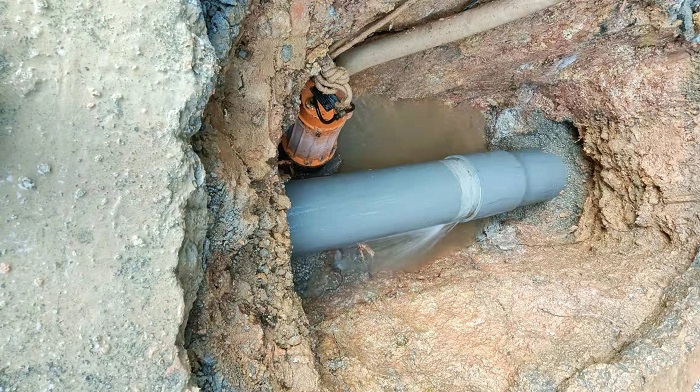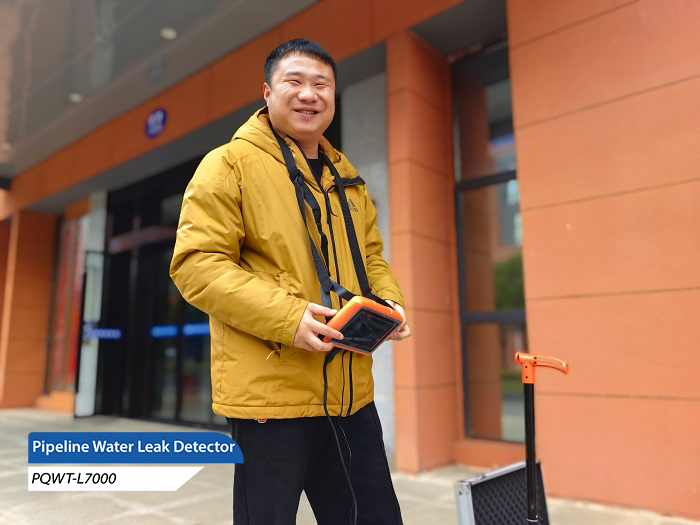As an important facility for ensuring the safety of buildings, the normal operation of fire pipes is crucial to maintaining the safety of people's lives and properties. However, the problem of fire pipe leakage occurs from time to time, which not only affects the normal operation of fire protection facilities, but also may lead to serious safety hazards. In this paper, we will discuss the main causes of fire pipe leakage and put forward corresponding preventive measures.

First, the main reasons for fire pipe leakage
Interface quality problems: in the fire pipe connection parts, such as interface quality is poor, asbestos cement interface of asbestos content is too high or pick up the fight is not solid, ductile iron pipe interface in the rubber gasket is not put in the interface clean, resulting in gasket eccentricity and distortion, plastic pipe joints twisted deformation or glue coating is not uniform, etc., may lead to water leakage phenomenon.
Pipeline foundation problem: due to the pipe trench trench bottom soft and hard, resulting in uneven pipe subsidence damage joints, is also an important cause of water leakage.
Pipe anti-corrosion problems: if the pipe anti-corrosion work is not in accordance with the standards and requirements of the operation, or the pipe wall galvanized layer damage without special treatment, may also lead to water leakage.
Flange connection problems: If the flange connection is not regular, such as the use of aging rubber gaskets or not according to the number of holes in the flange and the fastening method of bolts, resulting in uneven force, etc., may also lead to water leakage.
Welding quality problems: If there are serious welding defects such as slag, porosity or uneven welds in the pipe welds, it may also lead to water leakage.
Second, how to find out the leakage point
The use of pipeline leak detector can effectively find out the fire pipeline leakage points

Generally speaking, the basic detection method is to connect the pipeline leak detector host, headset, sensor. Turn on the pipeline leak detecto switch, wear a good headset, in the pipeline above the road surface to place the sensor, according to the pace of the length of the step-by-step placement, step by step listening, the closer the leak, the stronger the signal, the farther away from the leak, the weaker the signal, through the comparison of the signal strength between different points to achieve the purpose of detecting leaks. Therefore, when we use the instrument, a single point in the leakage signal is meaningless, to be more than one point repeatedly compared to compare the sound vibration of which the larger place is the leakage point, of course, we also need to consider a lot of other additional factors, such as leakage point of the direction of the broken mouth, because the pipe is round, if the side of the leakage, it may be larger instead of in the pipeline above the pavement on the side of the pipeline, instead of the pipe being Above the road, so the location of the pipeline to know by heart, in addition to the tee, bends, water pressure, depth of burial, buried layer and so on will have an impact on the detection of these to be taken into account.
3, the measures to prevent fire pipeline leakage
For the above reasons, this paper proposes the following preventive measures:
Improve the quality of interface: In the process of interface construction, it should be operated in strict accordance with the construction specification to ensure the quality of interface. For asbestos cement interface, should control the asbestos content, and ensure that the interface tamping; for ductile iron pipe interface, should ensure that the rubber gasket is placed correctly, and keep the interface clean; for the plastic pipe joint, should ensure that its twisting deformation within the allowable range, and uniformly coated with glue.
Optimization of pipe foundation: before construction should be pipe trench bottom soil quality for detailed investigation, according to the actual situation to develop the corresponding construction program. For the soft and hard soil, corresponding treatment measures should be taken, such as filling, reinforcement, etc., to ensure the stability of the pipeline foundation.
Strengthening pipeline anticorrosion: the operation should be carried out in accordance with the standards and requirements of pipeline anticorrosion layer to ensure the quality and thickness of the anticorrosion layer. For the damage of galvanized layer of pipe wall, special treatment should be carried out in time, such as applying antirust paint.
Standardize the flange connection: rubber gaskets of qualified quality should be selected, and bolts should be put on according to the number of flange holes and fastening method to ensure uniform force. For aging or damaged rubber washers should be replaced in time.
Improve the quality of welding: should be strictly in accordance with the welding process for operation, control the welding parameters and weld quality. For the existence of welding defects should be dealt with in a timely manner, such as grinding, filler welding and so on. At the same time, welders should continue to improve their skills.
Regular maintenance: For the fire pipeline that has been put into use, regular maintenance should be carried out. For the leakage parts found should be dealt with in time, and the inspection efforts in the area should be strengthened. At the same time, a sound fire protection facilities management system and operating procedures should be established to ensure the normal operation of fire protection facilities.
In summary, the causes of fire pipe leakage are manifold, in order to ensure the normal operation of fire protection facilities and people's lives.








